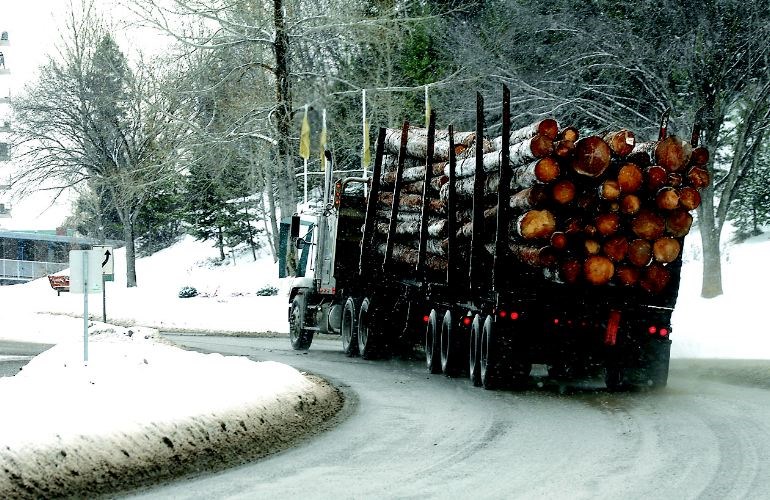The mountain pine beetle epidemic and the U.S. housing market crash in its rearview mirror, the B.C. forest sector forestry is basking in good news and growing optimism.
The data released this week from the Standard & Poors/Case-Shiller Home Price Indices in the United States bore that out. The national, 10-city and 20-city study groups all reported big jumps in the market value of homes.
Furthermore, the U.S. Census Bureau and the U.S. Department of Housing and Urban Development jointly announced on Tuesday that sales of new homes had jumped more than 20 per cent this year over last.
Movement and value in the U.S. housing market translates into better results for B.C. sawmills, because the United States construction industry buys a lot of B.C. lumber.
According to the Random Lengths lumber price chart, customers were paying about $280 per 1,000 board-feet of common lumber at this point in 2012 but this year the prices are already at $415 for the North American composite price. (Western Canadian spruce, pine and fir is selling at about $390 now compared to $268 a year ago.) The spring buying rush by lumber yards across the continent is just beginning so higher prices are expected for construction wood.
During the Natural Resources Forum held in Prince George in January, Hampton Affiliates CEO Steve Zika, owners of Babine Forest Products in Burns Lake, the mill destroyed by an explosion and fire a year earlier, told the audience that fibre supply (the amount of trees available) was a challenge that worried him, but ultimately the choice was made to rebuild the destroyed mill because of favourable market estimates in the long term.
While the provincial government has devoted much of its recent attention to the revenue prospects of mining and liquified natural gas, the forest sector remains a major player in the overall health of the B.C. economy.
After years of running a scaled down operation, and cancellation of the 2009 conference, the Council of Forest Industries is back in full mode again. They have announced their spring AGM and convention will be in Prince George April 4 and 5.
"The discussion at the conference in 2011 was around recovery. That recovery has arrived. It is in its infancy, it is still fragile, but the trends tell us we are off the bottom," said COFI official Doug Routledge.
Canfor, too, is in a bullish mood. The forestry giant is 75 years old this year and held its initial anniversary party in Prince George last week. Corporate officials used the occasion to announce a pair of annual general meetings (one for their pulp holdings, one for their lumber holdings) scheduled for Prince George in May. They also announced the launch of a humorous YouTube video campaign, their sponsorship of Prince George's Canada Day fireworks show, and a series of anniversary parties across B.C. and at international sales points.
The International Bioenergy Conference was a rousing success in Prince George last June, the B.C. Natural Resource Forum was an acclaimed hit in January, the Northern Interior Cruising Committee will call the north's accredited timber cruisers together in Prince George on May 9 and 10, and the Association of B.C. Forestry Professionals just held a well-attended conference at the Civic Centre last week after running only skeleton meetings the last few years.
"We are seeing a comparable number of inductees this year into the profession [Registered Professional Foresters and Registered Forest Technologists] but the forestry schools are having an increase in applicants," said ABCFP board president Steve Lorimer.
"We have 60 million hectares of forested land - that's private, Crown and parks - in B.C. so there will always be a demand and a fundamental need to maintain a healthy forest from the top of the province to the bottom," said the group's CEO Sharon Glover.
Unlike commercial fisheries, mineral deposits, oil and gas pools, and agriculture, the forest industry is not site-specific, with forest covering much of the provincial landmass. Every B.C. community has a direct stake in some combination of harvesting, milling and silviculture. The only two communities that might think they are disconnected from forestry, said Glover, are the ones who have perhaps benefitted the most.
"[Vancouver and Victoria] certainly appreciate the roads and schools and hospitals that forestry paid for but they don't necessarily know how that lifestyle all happened," she said. "I think forestry is a pretty proud profession and B.C.'s professionals have come through a very difficult time, they did a good job all the while of managing a complex resource, and it is exciting to think about the challenges ahead."



